Ready to jump into the low-carb food craze by learning how to make zucchini noodles? Let's explore 5 different ways to transform your zucchini into zoodles, 6 types of zoodle pasta, and 6 ways to cook them - so, are you ready to zoodle?
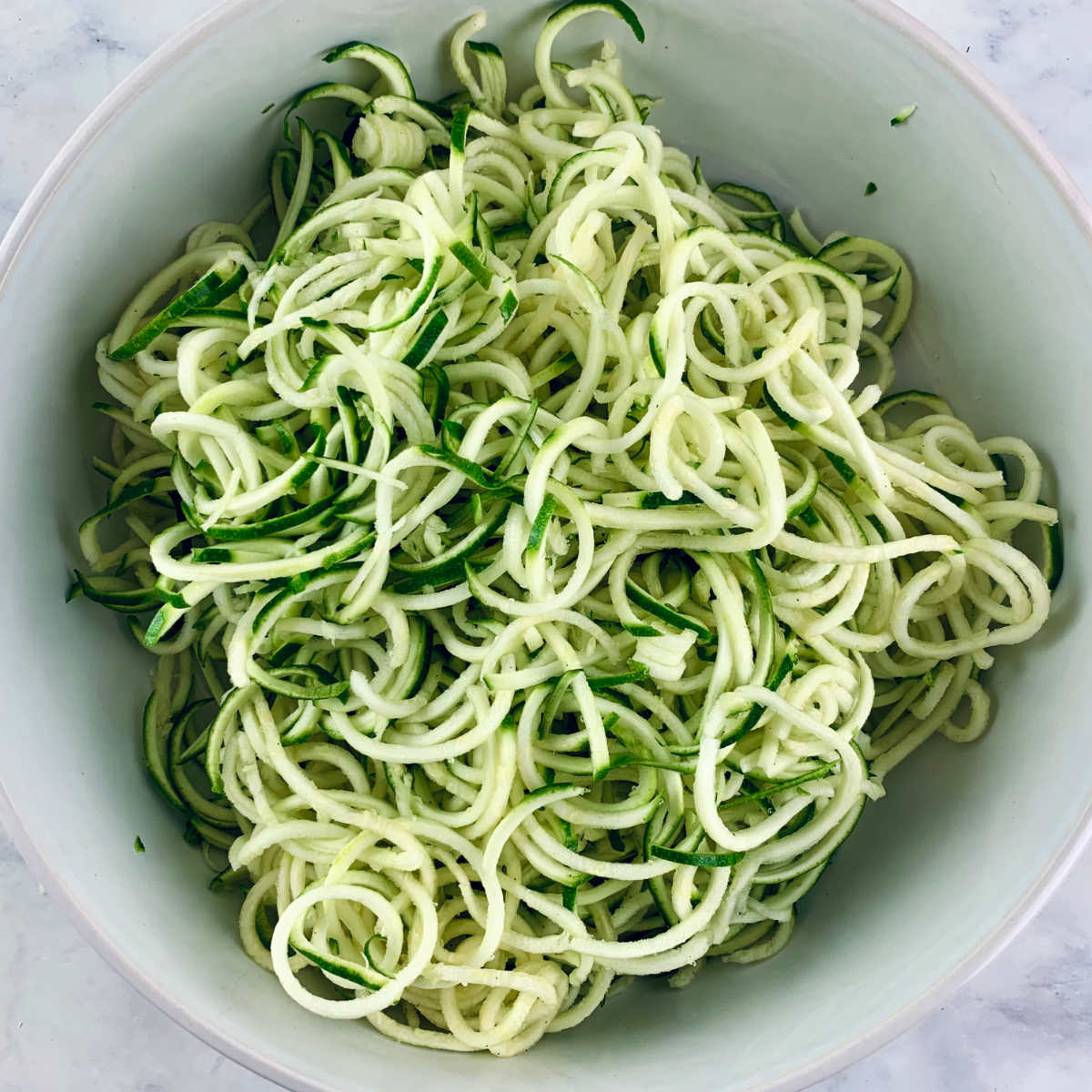
Are you looking for a low-carb, gluten-free alternative to your favourite pasta dish? Look no further! Zucchini noodles or "zoodles" (zucchini + noodles = zoodles 😉) are the perfect way to cut carbs while still enjoying all the delicious flavours of traditional pasta.
In this post, we'll show you everything you need to know about making veggie noodles from zucchini so you can start using them in your next meal. So if you love zucchini and are looking for a tasty and healthy pasta substitute, read on!
Do you need to find out all the ins and outs about zucchini and squash before jumping into some zoodle making? Then head over to our squash and zucchini post to find out their differences, varieties, and how to choose and store them - basically everything and anything squash and zucchini!
- How to Make Zoodles
- 1. How to Make Zucchini Noodles with a Spiralizer
- 2. How to Make Zucchini Noodles with a Mandoline or V-slicer with a Julienne Attachment
- 3. How to Make Zucchini Noodles with a Julienne Peeler
- 4. How to Make Zucchini Noodles with a Vegetable/Potato Peeler
- 5. How to Make Zoodles with A Handheld Spiralizer
- Types Of Zoodles
- How to Store Spiralised Zucchini
- Tips and Questions
- Ready for Some Zucchini Noodle Recipes?
How to Make Zoodles
One of the best ways to make zucchini noodles perfectly is with a spiralizer. No spiralizer? No worries, you can still make zucchini noodles without one.
There are still 5 other ways you can make raw zucchini noodles. You can use a mandoline or v-slicer, a julienne ora, a potato/vegetable peeler or a handheld spiralizer.
1. How to Make Zucchini Noodles with a Spiralizer
Round zucchini is much easier to spiralize than its long cousin as it is smaller and is held between the claw and the blades easier.
To use long green zucchini, you will need to cut it into manageable pieces. If you are using a bent zucchini, it will be easier to cut it in half where it bends and then spiralize the two smaller pieces separately.
- Rinse your zucchini under cold water and cut off the tops, bottoms and any blemishes.
- Place the end of the zucchini so that it faces the blade, and then jab the other end into the claw end to hold it in place.
- I use the Paderno Spiralizer with 4 blades, which has a steel spike that you feed through from the blade end and poke through your zucchini, so it holds it firmly.
- Turn the handle while applying gentle pressure and feed the zucchini through the blades.
- Continue to do this until all your zucchini is spiralized. (I like to cut up the end bits and freeze them to use in a vegetable soup, fried rice or omelette).
- Hey presto – you will get the best zucchini noodles this way!!
NOTE: spiralizers will give you extra long noodles, so you will need to cut the zucchini as you are spiralizing it, so it is easier to eat.
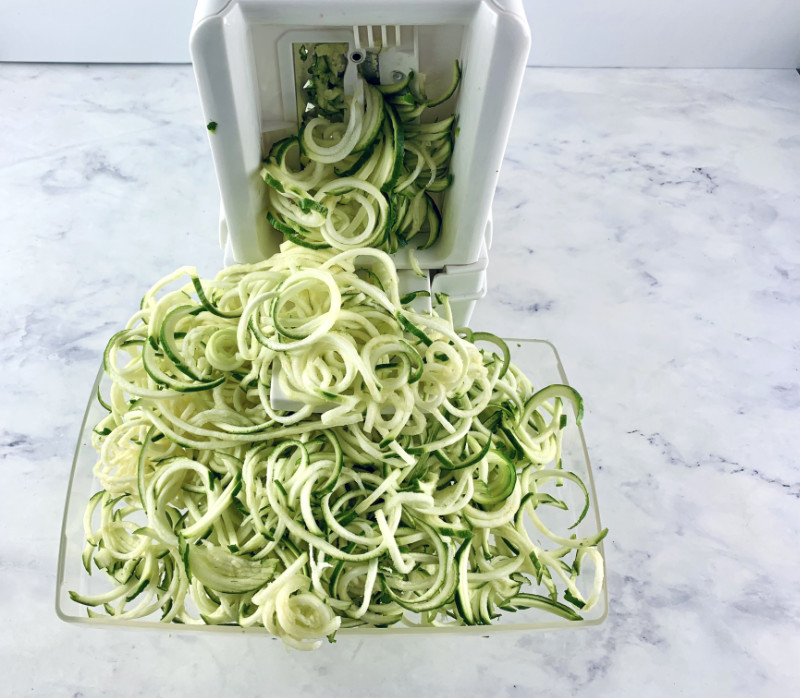
2. How to Make Zucchini Noodles with a Mandoline or V-slicer with a Julienne Attachment
Another option would be to use the julienne attachment on your mandoline or v-slicer.
- Rinse your zucchini under cold water and cut off the tops, bottoms and any blemishes.
- Set up your mandoline or v-slicer, and use your julienne blade for the zoodles.
- Take your zucchini and pierce it with your safety guard to secure it in place and protect your fingers. (These blades are usually super sharp, so please be careful when using them.)
- You can also place your slicer over a bowl so that the zoodles can be collected.
- Then glide your zucchini up and down the front of the slicer until your zucchini is used up.
- Voila – straight zoodles!
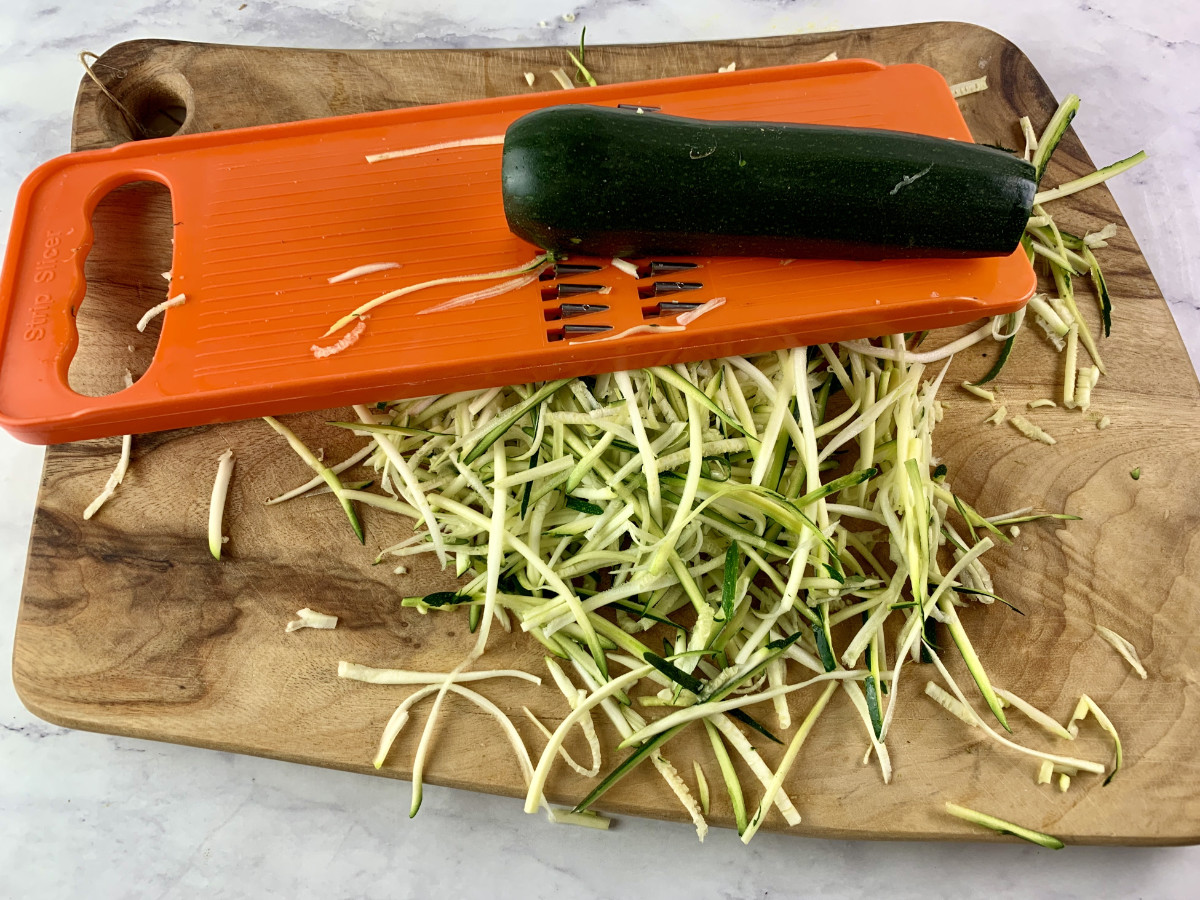
3. How to Make Zucchini Noodles with a Julienne Peeler
For longer zucchini, a julienne peeler is a great choice. You can find them in most kitchen stores, and it's important to switch them out regularly, as the blades can get dull over time.
I have a few different ones in my kitchen drawer; some are budget-friendly and still do a great job. But if you're looking for a top-notch and easy-to-use model, I'd suggest checking out the OXO Good Grips peeler range.
- Wash your zucchini well under cold running water.
- Cut off the ends of the zucchini and any blemishes.
- Lay your zucchini lengthwise on your chopping board, then using your julienne peeler, apply gentle pressure along the top of the zucchini to cut off one layer.
- Turn it around so that the now flat part of the zucchini is facing your board (this makes it much more stable), then continue to use your peeler to cut julienne strands until all your zucchini is used up.
- You will be left with the soft centre with this method. You can throw it away or blitz it rather than dice it up and then freeze it to use in soups or meatballs.
- Using a julienne peeler may take longer, but it's worth it!

4. How to Make Zucchini Noodles with a Vegetable/Potato Peeler
You may not have any of the others in your kitchen, but you more than likely have a vegetable peeler hiding in a kitchen drawer waiting to be put to use making some delicious zoodles. They work best with long zucchini.
- Follow steps 1-4 on how to make zoodles with a julienne peeler.
- Then stack a few noodles on top of each other, and depending on how wide they are, cut them in half or in thirds.
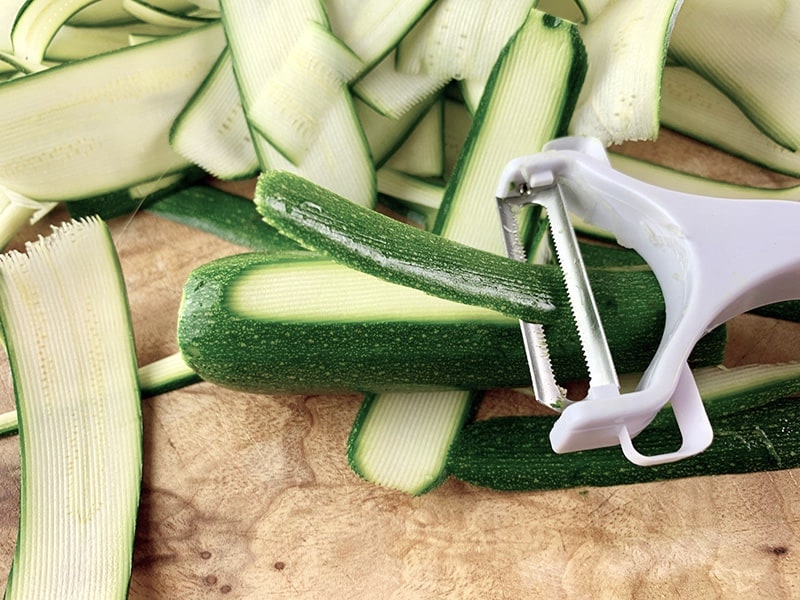
5. How to Make Zoodles with A Handheld Spiralizer
I have left this one to last because it is my least favourite option, even though it is quite cheap.
It's a little harder to use and takes a bit more time since the turning isn't as smooth as with the stand-up spiralizer.
It's a small contraption with a few different blade options, but it can make your wrist sore after spiralizing several zucchinis, and it's difficult to keep the slicing straight. To use, place the zucchini in the shute and twist it around to make the zoodles.
Types Of Zoodles
We are going to show you how to make six different types of zoodle pasta - spiral spaghetti, regular spaghetti, angel hair, pappardelle, fettuccini, and lasagna sheets.
1. Spiral Spaghetti Zoodles
The only way to achieve this is with a spiralizer, but they are so affordable now it is easy to find them at a reasonable price. And if you think you will be spiralizing more veggies, you may want to invest in one.
My personal favourite is the Paderno 4 Blade spiraliser as it has 4 different blades to choose from; it is a countertop spiralizer and easy to use, and the suction cups stick to your kitchen bench so that the spiralizer doesn't dance around while you are using it.
I have also given the Spiralizer Inspiralizer Pro a whirl during a cooking demonstration and found that to be just as easy to use as the Paderno. Or even the Avanti – Spiretti Fruit and Vegetable Spiralizer work along the same lines.
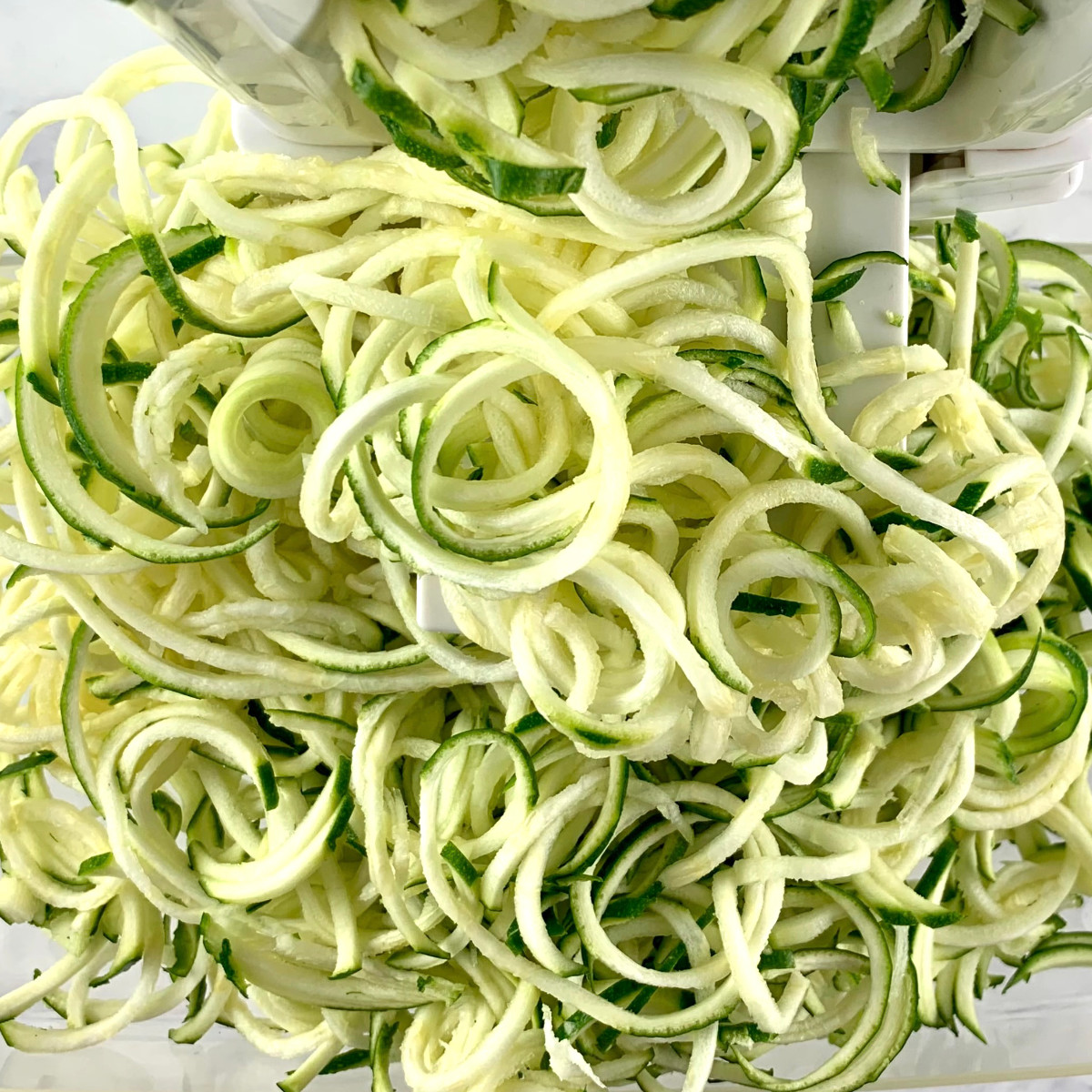
2. Regular Spaghetti Zoodles
If you prefer your spaghetti to be flat, then you can do this by using a mandoline or v-slicer and then using a good knife to cut the long ribbons lengthwise to form spaghetti strands.
3. Angel Hair Zucchini Zoodles
Just like angel hair pasta, they are much skinnier than regular spaghetti. They can be made with the right attachment on your spiralizer, a julienne peeler, or a julienne attachment on your mandoline or v-slicer.
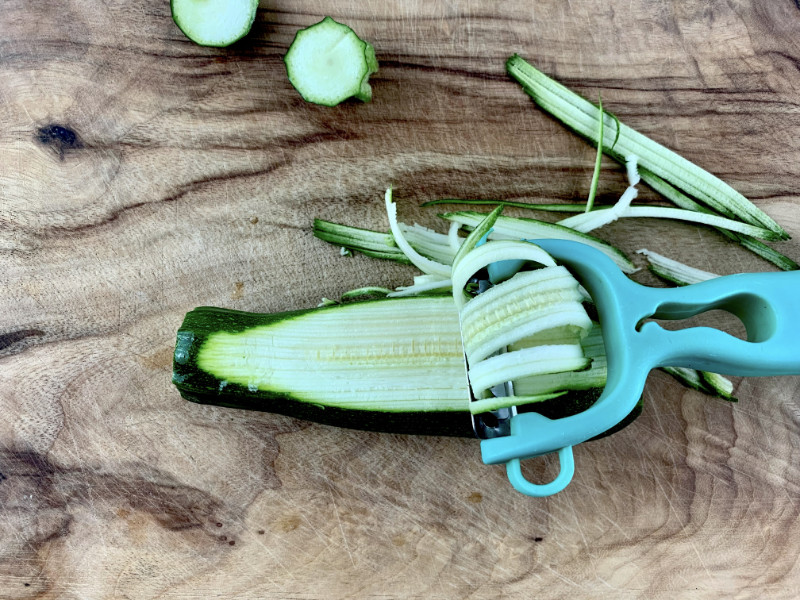
4 . Pappardelle Zucchini Zoodles
Pappardelle is a large, very broad and flat noodle, about twice the size of fettuccini. All you need here is a vegetable peeler, and there are few kitchens nowadays without one of these lurking in a drawer somewhere. Either a Y-peeler or a straight peeler will work well.
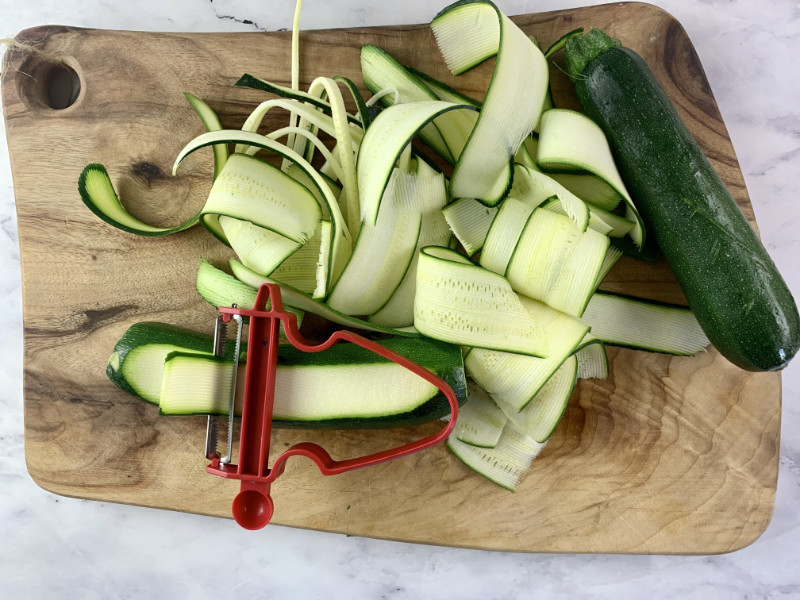
5. Fettucine Zucchini Zoodles
Fettucine is flat, thick pasta about half the size of pappardelle or about twice the size of spaghetti.
You can either use a mandoline or v-slicer, or vegetable peeler to cut your zucchini into ribbons, and then you will have to use your knife to cut the noodles in the middle to get fettuccine strands. It is quite time-consuming, but in the end, you will have some gorgeous fettuccini zoodles.
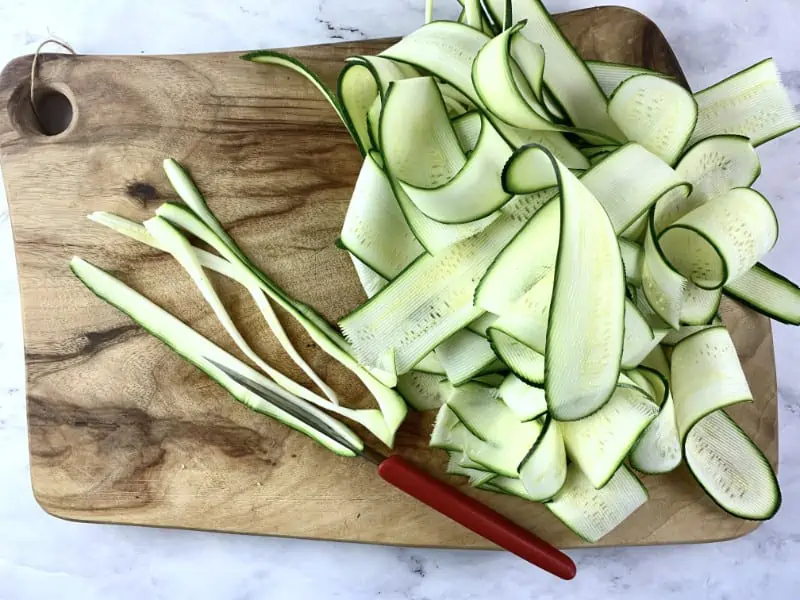
6 Zucchini Sheets
One of the oldest styles of pasta around might just be lasagna sheets; they are wide and flat. You will need large zucchini to make them.
With a sharp knife, slice your zucchini into thin pieces, and layer it into your next lasagna instead of the regular pasta.
How to Store Spiralised Zucchini
Store zucchini noodles wrapped in some kitchen paper to absorb any water the zucchini may release; pop them in an air-tight container and keep them in your fridge, and voila, you will have low-carb zucchini noodles ready to use in your next pasta dish; they should keep 2-3 days this way.
Tips and Questions
How to Choose Fresh Zucchini
- For the best zucchini, buy them in season during the summer months. Look for ones that are small to medium in size.
- Pick firm ones, avoid any that are overly soft, and make sure they don't have any marks or blemishes. The freshest zucchinis will have a few tiny hairs on them.
What is the Difference Between Zucchini and Squash?
- Colour is the easiest way to distinguish zucchini from a yellow squash. Zucchini is usually deep green but can also be a golden yellow, whereas yellow squash is unmistakably bright yellow.
- Another clue is their shape - zucchini is typically straight, whereas yellow squash has a bulbous bottom and slims down towards the top.
Is Raw Zucchini Safe to Eat?
Eating raw zucchini is generally safe, but sometimes it can be really bitter - a sign that it has a high concentration of cucurbitacins. While these compounds can be toxic, it's highly unlikely to get poisoned from eating commercially available zucchinis as they have been bred out of them.
Should I Peel My Zucchini Before Spiralizing?
I keep the zucchini skin on when spiralizing - I love the extra green colour it brings to my plate, plus all those added nutrients!
Can You Freeze Zucchini Noodles?
Despite those who think otherwise, I wouldn't suggest freezing spiralized zucchini – their high water content means they'll go limp and turn to mush when defrosted.
Ready for Some Zucchini Noodle Recipes?
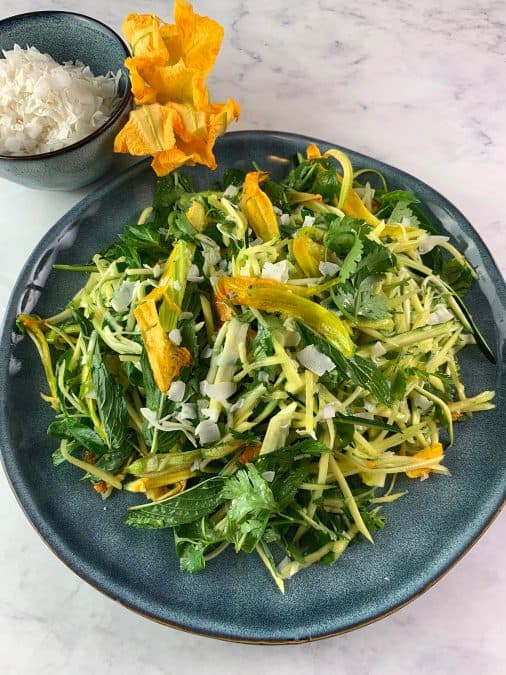
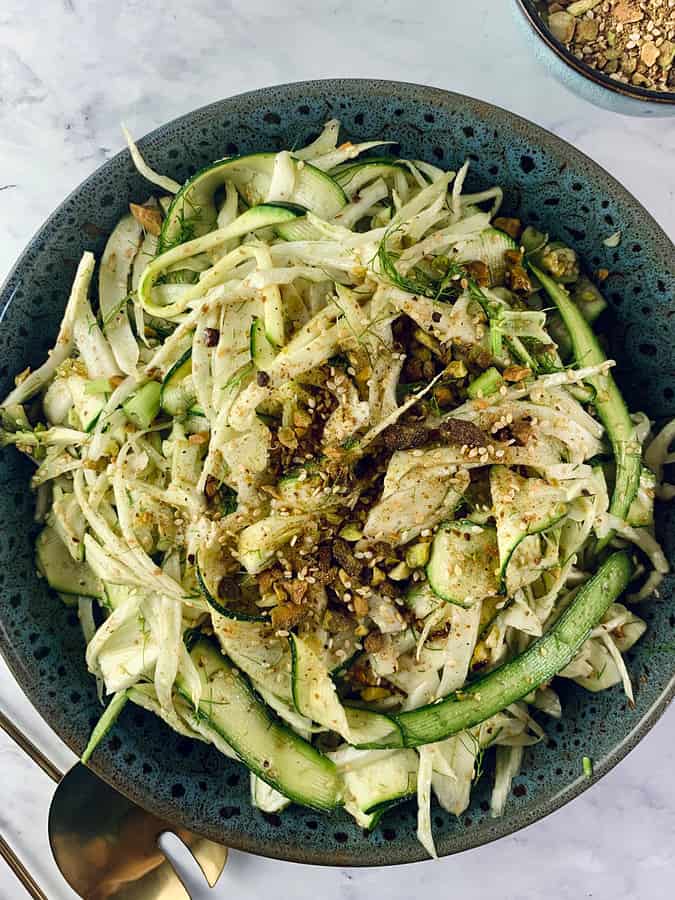
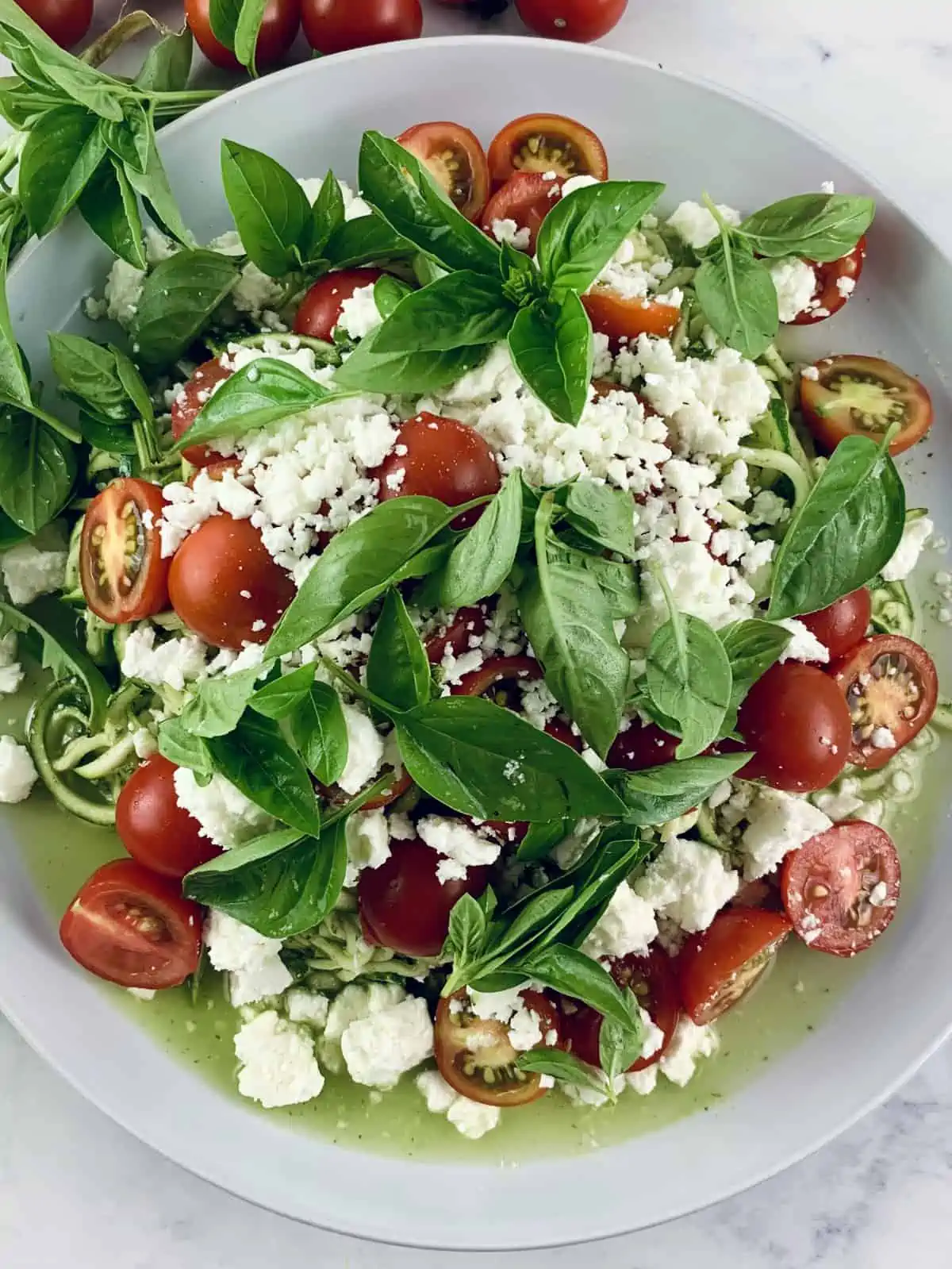
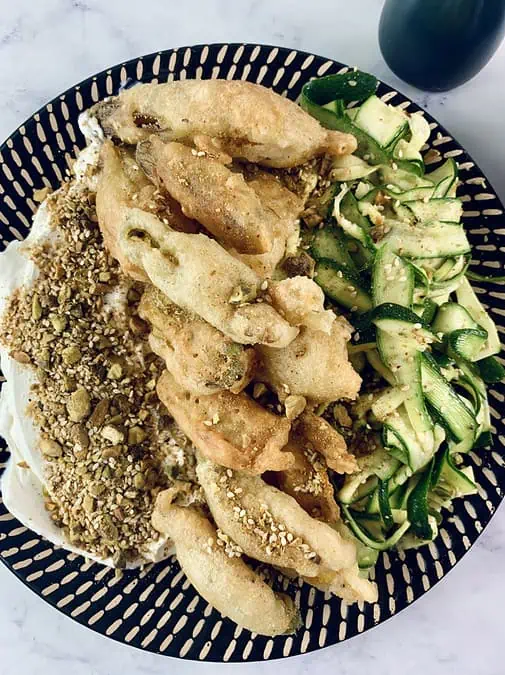

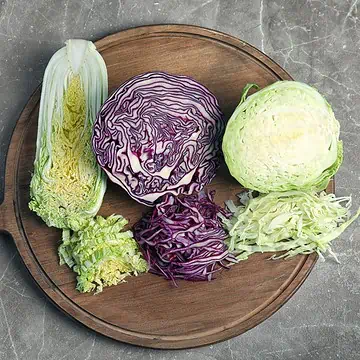
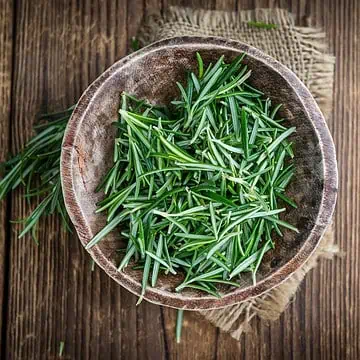
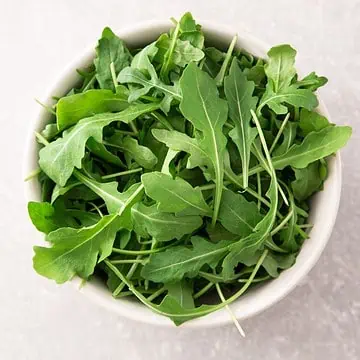
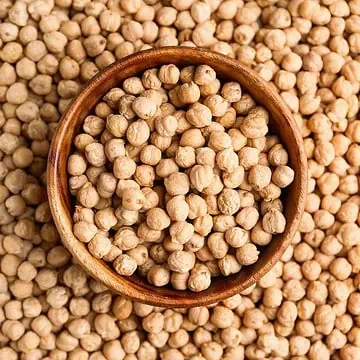
Leave a Reply